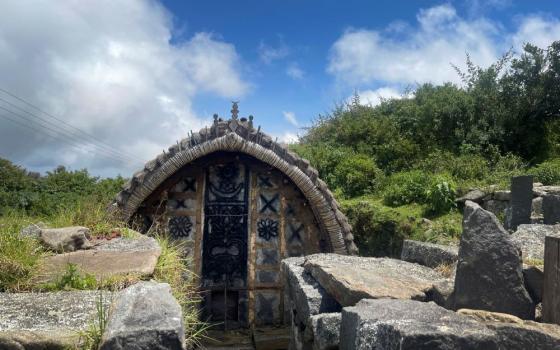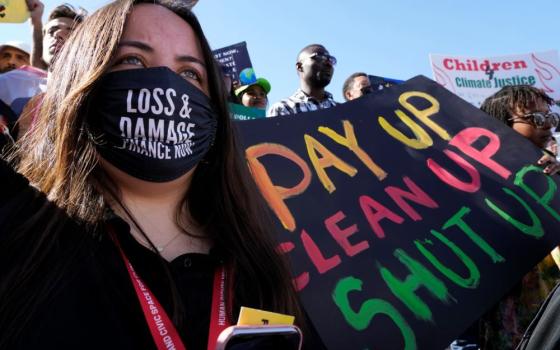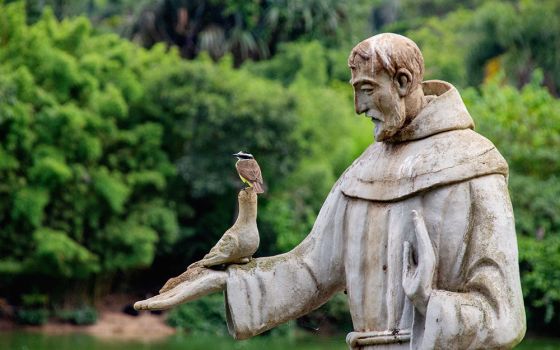
São Paulo Zoo, Brazil (Wikimedia Commons/Mike Peel, www.mikepeel.net)
Welcome to Burning Questions, the EarthBeat feature that takes on those questions smoldering in your mind about climate change and religion — from the basics to more complex, and everything in between. Have a Burning Question of your own? Let us know.
For Catholics, Oct. 4 is widely recognized as the feast of St. Francis of Assisi.
Among the best-known and most venerated of the saints, Francis of Assisi has become synonymous in religion pop culture with brown habits, birdbaths and the blessing of animals on his feast day.
But beyond pets, Francis is also known as the patron saint of ecology.
What does that mean? Who made that decision? And why?
It's the subject of our latest Burning Question here at EarthBeat. Let's get to it.
So who was Francis of Assisi?
There's so much to say, so we'll just hit the highlights here.
Francis was born in the Italian town of Assisi sometime between 1181 and 1182. He was the son of a wealthy cloth merchant and dreamed in his early life of becoming a knight. After he was taken captive during a battle with a neighboring town in 1201, Francis became severely ill. During this time, his conversion began.
Several years later, as he was beginning a new military expedition, he had a dream in which God spoke to him, and he returned to Assisi to tend to the sick. A year later, in 1206, he had another vision, in which Jesus directed him to rebuild his church. Francis first took this message to mean to repair the Church of San Damiano, outside Assisi, but later understood it as the wider church, and, some say, even creation itself.
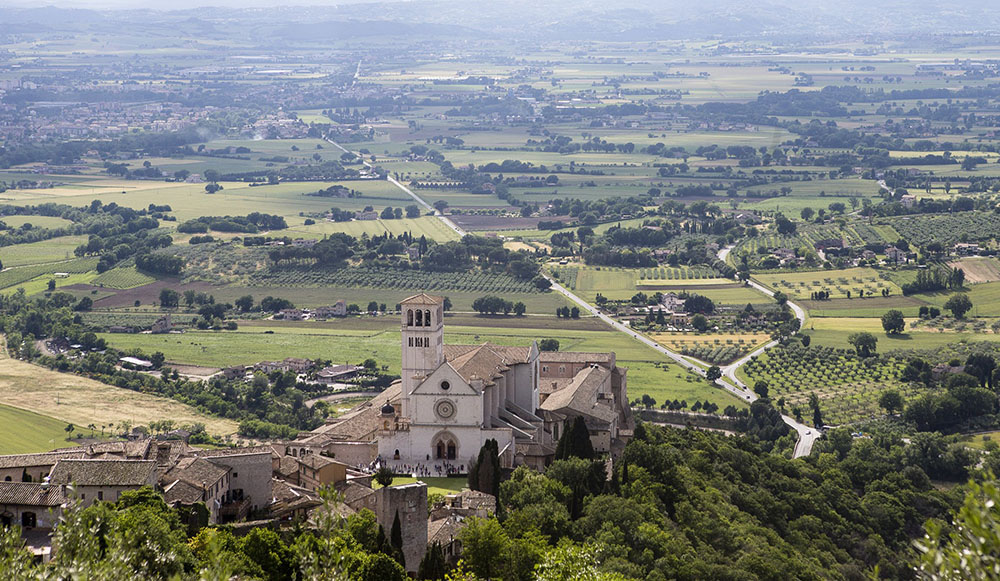
The Basilica of St. Francis of Assisi is seen from the Rocca Maggiore, a fortress on top of the hill above the town of Assisi, Italy. (CNS/Octavio Duran)
From there, Francis fully committed himself to the church, abandoning his possessions and inheritance for a life of poverty and simplicity. He went on to found the Order of Friars Minor (commonly known today as the Franciscans), along with co-founding the Order of St. Clare and the Third Order Secular and Third Order Regular.
He was known for his love of all creation (we'll get into that more later), but also for his dedication to the poor, peace and interreligious dialogue, such as his encounter with the sultan of Egypt during the Fifth Crusade.
Francis died in October 1226. Less than two years later, he was canonized a saint.
When was he named the patron saint of ecology?
Not that long ago, as it turns out.
On Nov. 29, 1979, Pope John Paul II issued a papal bull that declared St. Francis of Assisi the patron of ecology and of those who promote ecology.
In the bull, John Paul II wrote, "Among the holy and admirable men who have revered nature as a wonderful gift of God to the human race, St Francis of Assisi deserves special consideration."
The pope went on to note Francis' deep sense of the Creator at work in the world, and through it, the presence of the divine spirit. John Paul II mentioned too the "Canticle of the Creatures," Francis' famous prayer poem that is one of the cornerstones of Franciscan spirituality.
(The canticle's recurring refrain "Praised be you, my Lord," or in Umbrian dialect of early Italian, "Laudato Si', mi signore," inspired the name of Pope Francis' 2015 encyclical on the environment and human ecology, "Laudato Si', on Care for Our Common Home." And it was Pope Francis who was the first to tap the Assisi saint as his papal namesake.)
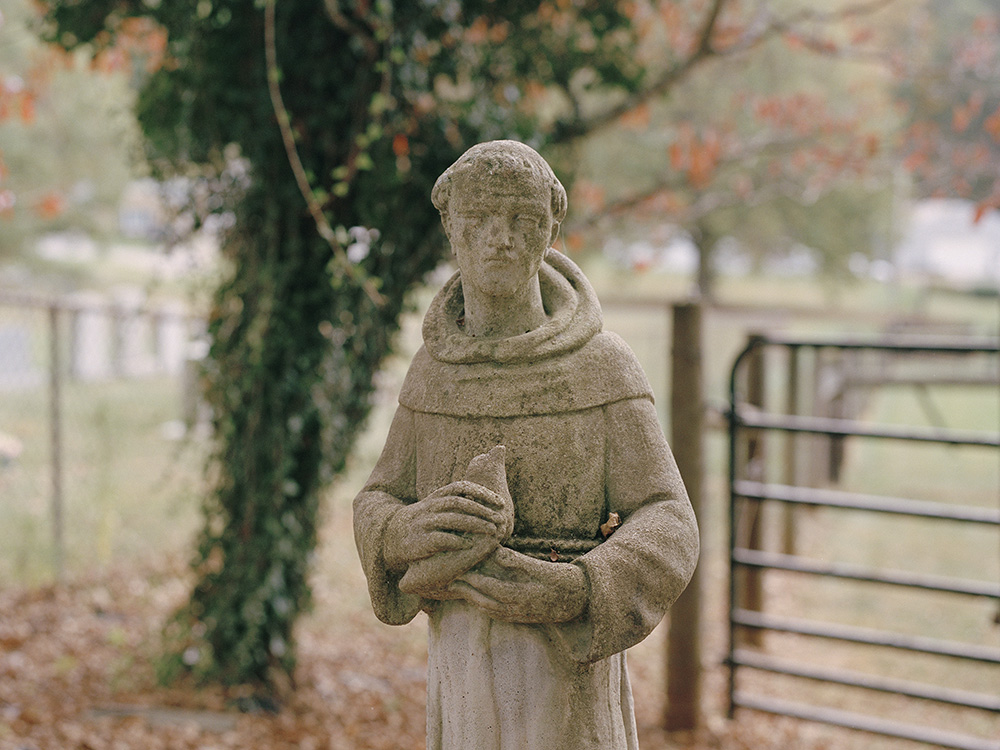
A statue of St. Francis of Assisi on a farm in Floyd, Virginia (CNS/Isabelle Baldwin)
Naming Francis of Assisi as the patron saint of ecology came at the end of the 1970s, a decade that witnessed the birth of the modern environmental movement and began with the celebration of the first Earth Day, held in the United States. The confluence of these two events may be more coincidence than anything, as Earth Day didn't become a global event until 1990.
Back up a second. What does it mean to be a patron saint of something?
In Catholic tradition, a patron saint is someone believed to have the ability to intercede with God on behalf of someone's prayers. They are also titles that honor the life that a saint lived.
The practice of naming patron saints dates back centuries, to the earliest days of the Catholic Church. Today, it seems that there are patron saints for everything. Yes, there are patron saints for churches. There are patron saints for cities and countries (Francis of Assisi and Clare of Assisi, for example, are co-patron saints of Italy). And there are patron saints for almost every profession and circumstance.
St. Isidore, patron saint of farmers.
St. Elizabeth of Hungary, patron saint of bakers.
St. Teresa of Avila, patron saint of headaches.
St. Francis de Sales, patron saint of journalists.
And some are patron saints of multiple things. That includes Clare of Assisi, Francis' contemporary, who is the patron saint of eye disorders and good weather, but also of television.
So why was Francis of Assisi made the patron saint of ecology?
Let's go back to "The Canticle of the Creatures," which the saint composed near the end of his life. In it, Francis not only offers up praise to God for all of creation — naming "Sir Brother Sun," "Sister Moon and Stars," "Brother Wind" and "Sister Water" — but invites each to join him in praising God.
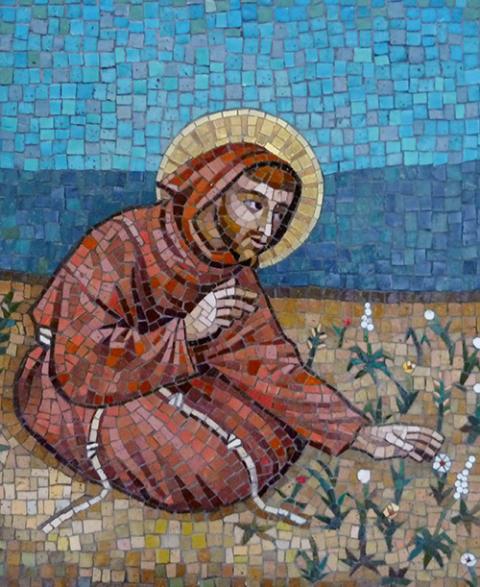
(Flickr/Jim McIntosh)
Praised be you, my Lord,
through our Sister, Mother Earth,
who sustains us and directs us
bringing forth all kinds of fruits
and colored flowers and herbs.
The canticle isn't just a hymn of praise, but a reflection of how he encountered God in all things.
"For Francis all creation became a theophany, a manifestation of the goodness of God," writes Franciscan Sr. Ilia Delio. "Francis praises God 'through' (per) the elements of creation, for the Canticle discloses Francis' view of nature as a sacramental expression of God's generous love. This love binds us together in a family of relationships, 'brother' and 'sister.' "
In his biography of Francis, St. Bonaventure, one of his early followers and a doctor of the church, wrote of the saint, "He rejoiced in all the works of the Lord's hands and through their delightful display he rose into their life-giving reason and cause." Bonaventure continued:
With an intensity of unheard devotion
he savored
in each and every creature
— as in so many rivulets —
that fontal Goodness,
and discerned
an almost celestial choir
in the chords of power and activity
given to them by God,
and, like the prophet David,
he sweetly encouraged them to praise the Lord.
Delio, a theologian at Villanova University, writes that Francis' understanding of God's presence "was not an immediate experience," but developed over time as he grew in relationship with Christ and came to view the Incarnation as sanctifying all creation. "It took Francis a lifetime to realize that he was truly brother to the whole cosmos."
She adds that for Francis, respect for creation sprang not from an obligation, but from love, because he saw it as "intimately united" with God. "Everything spoke to Francis of the infinite love of God."
And Francis had a special relationship with animals, too, right?
Indeed, there are many stories from Francis' life that involve animals. In one, Francis, with the sign of the cross as his only armor, tamed a wolf that was terrorizing the town of Gubbio and convinced the creature to pledge to live in peace with the people there. In another, he made nests for doves set for sale.
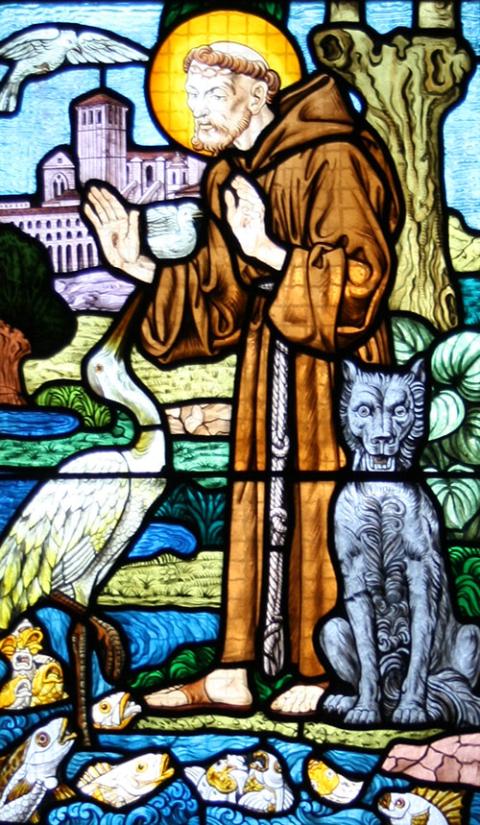
(Wikimedia Commons/GFreihalter)
He also directed his companions not to cut down the entire tree when gathering firewood and to set aside a portion of the garden for wildflowers to bloom.
One of the more popular ways people engage with Francis of Assisi is through blessings of pets and animals at parish churches on his feast day. But some say seeing the saint only as "Francis, friend of the animals" risks diluting his ministry and message.
Franciscan Fr. Daniel Horan has critiqued what he calls a "birdbath industrial complex" around Francis — that is, those instances that "reduce the saint to a medieval petting-zoo mascot or state simply that he 'loved animals' without regard for the radical truth about God and creation he intended."
"St. Francis called all creatures — and not merely those nonhuman animals we classify as sentient, but rocks and trees alike — his sisters and brothers because, in a real sense, they are," Horan said, adding that the consequences of humanity's hubris, which sets us above creation, are visible in pollution of the Earth, extinction of species and climate change.
In Laudato Si', Pope Francis too pointed to the radical nature of the saint's approach to creation: "The poverty and austerity of Saint Francis were no mere veneer of asceticism, but something much more radical: a refusal to turn reality into an object simply to be used and controlled."
"He shows us just how inseparable the bond is between concern for nature, justice for the poor, commitment to society, and interior peace," Pope Francis wrote.
All of those elements are present in how humans treat the world in which they live.
What's the legacy of St. Francis' teachings on creation today?
There's no denying that Francis of Assisi has left the world with a Franciscan view of creation.
In explaining that perspective, theologian Delio in her 2003 book on the subject, A Franciscan View of Creation: Learning to Live in a Sacramental World, poses this question: What is our fundamental relationship to nature?
"We live in solidarity with every aspect of creation, realizing that creation is incomplete and yearns for its completion in God," she wrote in a guide to Franciscan views on creation.
It's a vision that sees creation as dynamic and each creature an aspect of God's self-expression in the world, Delio says. "The fundamental relationship between Incarnation and creation leads to the central idea that each and every aspect of creation has absolute dignity because everything is created specifically and uniquely through the Word of God."
The Franciscan tradition views all of creation as "a free gift from God, given equally to all." It believes in a reverent attitude toward nature and it roots ecological commitment in respecting all that comes from God.
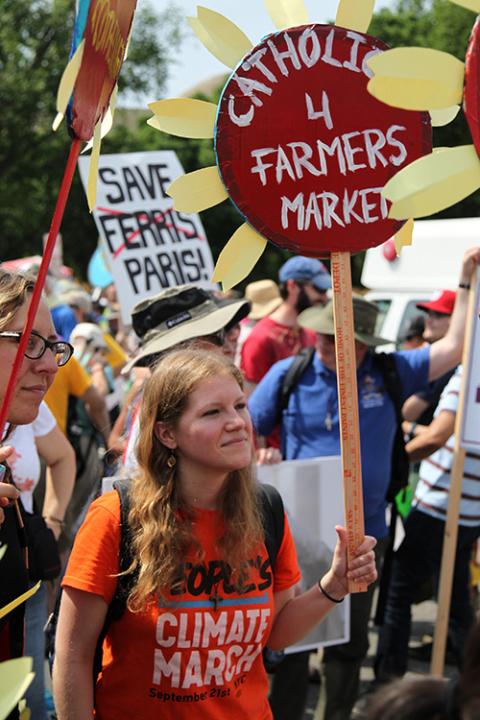
Kelly Moltzen, with the Franciscan Action Network, participates during the People's Climate March in Washington April 29, 2017. (CNS/Dennis Sadowski)
This Franciscan view of creation, Delio adds, requires people to recognize their interconnectedness with the natural world, as well as how sinful acts have contributed to current ecological crises and how future actions can either contribute to fulfilling God's vision or thwart it.
It's a message that Franciscan communities have been sharing for decades, and one that animated them to place care for the environment at the core of their ministries well before Laudato Si'.
In fact, three years after Francis of Assisi was named the patron saint of ecology, Franciscans and Italian environmental groups met at the Terra Mater International Seminar. There, they issued the Gubbio Charter — a declaration that synthesized Franciscan spirituality and modern science in calling for the global community to replace humanity's exploitation of nature and a planet in peril with "an attitude of sharing, protection, respect and brotherhood among all creatures."
And today, groups like Franciscan Action Network have made care for creation, including addressing climate change, focal points of their public policy advocacy and work.
Where can I learn more?
As you've probably gathered, there's much more to explore about Francis of Assisi and his teachings on creation and spirituality.
You can dig into the writings of Francis and Clare of Assisi, as well as early biographies, at Franciscantradition.org.
In 2016, following the release of Laudato Si', the Franciscans published a study guide on the care of creation.
The global Franciscan family in 2014 created a website, Francis35.org, to mark the 35th anniversary of Francis of Assisi being named the patron saint of ecology. The resources, available in multiple languages, outline the Franciscan commitment to work for the integrity of creation.
There are also countless articles and books written about Francis and Franciscan ecology. Several of the authors, including Delio and Horan, are regular contributors to NCR and Global Sisters Report.
Some titles on Franciscan ecotheology to check out include:
- Horan's 2018 All God's Creatures: A Theology of Creation;
- The 2012 book Ecological Footprints: An Essential Franciscan Guide for Faith and Sustainable Living, from Franciscan Sr. Dawn Nothwehr, an ethicist at Catholic Theological Union;
- Care for Creation: A Franciscan Spirituality of the Earth, a 2008 text written by Delio, Franciscan Br. Keith Warner and Pamela Wood.
[Brian Roewe is an NCR staff writer. His email address is broewe@ncronline.org. Follow him on Twitter: @BrianRoewe.]
Advertisement




